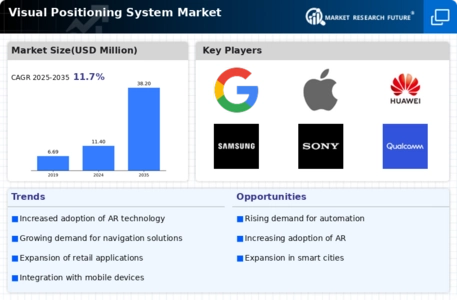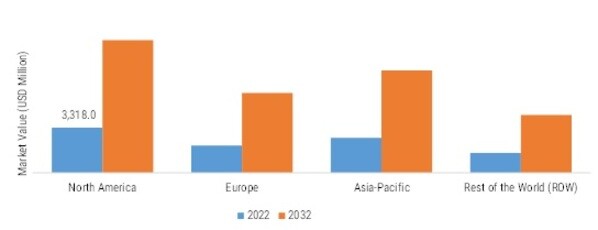Visual Positioning System Market Summary
As per Market Research Future Analysis, the Visual Positioning System (VPS) market was valued at USD 9,320.3 million in 2022 and is projected to grow to USD 27,419.6 million by 2032, with a CAGR of 11.7% from 2023 to 2032. The VPS utilizes computer vision and machine learning to determine the location and orientation of devices in real environments. Key drivers include the rise of AI-enabled optical sensors and the increasing use of commercial drones across various sectors. The market is characterized by significant growth in indoor VPS applications, driven by industrial automation and the demand for precise positioning in environments where GPS is ineffective.
Key Market Trends & Highlights
Key trends influencing the Visual Positioning System market include advancements in technology and increasing applications across industries.
- Market Size in 2022: USD 9,320.3 million; projected to reach USD 27,419.6 million by 2032.
- CAGR during 2023-2032: 11.7%; driven by AI-enabled optical sensors and commercial drone usage.
- Major Component: Camera Systems held ~51.8% market share in 2022.
- North America accounted for 35.6% of the market share in 2022, expected to maintain dominance.
Market Size & Forecast
| 2022 Market Size | USD 9,320.3 million |
| 2032 Market Size | USD 27,419.6 million |
| CAGR | 11.7% |
Major Players
Key players include Google, Apple, Huawei, Samsung, Sony, Qualcomm, MediaTek, Infineon, STMicroelectronics, Broadcom, Texas Instruments, NXP Semiconductors, Epson, and Zebra Technologies.

















